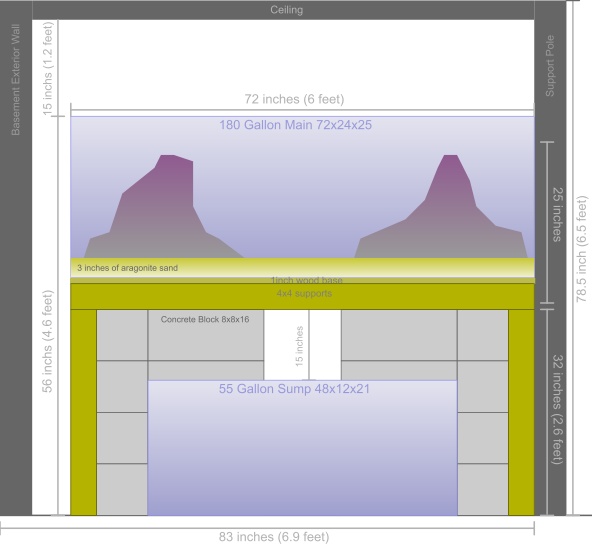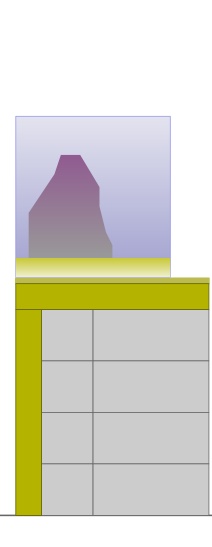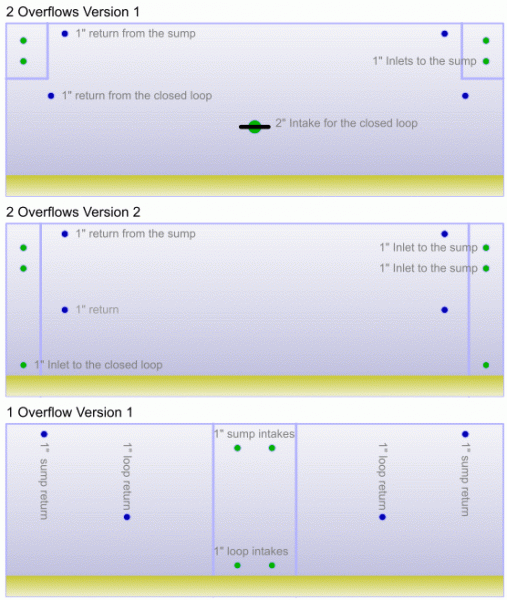I'm in the research phase of my first saltwater aquarium. I have two books I'm reading along with everything I can read online (articles here are great) and more books to come.
I'm finishing out my basement and this would be a good time to add an in wall 125-240 gallon tank. Looks like a 125 is going to be the tank.
I will not be putting the tank together until later in the year, so I'm looking for deals on tanks and equipment while reading, reading, and reading.
If I don't find any good deals on a tank, I'm falling back to a 55 gallon which will require a big change to my wish list.
I like the idea of a FOWLR tank with a peaceful/semi aggressive community.
Equipment (researching)
Drywall/Greenboard, mildew resistant paint
55 gallon sump (main tank if I do not find another)
EuroReef or Vertex Protein Skimmer
T5 Lighting
Concrete blocks, plywood for a stand
Pumps (Dolphin/ Iwaki/suggestions?)
Plumbing for a closed loop/sump system
Two 150w titanium heaters with controller
Live rock and base rock (maybe make some with Aragocrete)
3" of aragonite sand
Saltwater mix
Saltwater master test kit
Refractometer
Spectrapure ~75 GPD 3 stage RO/DI unit
Wish list (still researching & dreaming too big!)
Snowflake or Zebra Eel
Porcupine Puffer
Blue & Yellow Hippo Tang
One Spot Foxface
Heniochus Black & White Butterflyfish
Annularis Angelfish
Volitan or Antennata Lionfish
Halloween & Electric Blue Hermit Crabs (should get 2" or so)
Assorted Angler (after the above get larger, a nice one that my lion won't eat)
Nassarius Snails
Plan (changing daily)
Make artificial Aragocrete rocks and let them cure.
Place concrete blocks for stand.
Place the aquarium on a sheet of plywood with foam for leveling.
Finish drywall and check aquarium for fit.
Begin making saltwater.
Place 55 gallon sump, add skimmer, pumps, heater, run plumbing
Add lighting, electrical
Prepare rock for mounting in the tank (drill holes, elevate, etc.)
Add saltwater, test system.
Remove and store water to make room for rocks.
Add base rock
Add live rock to sump and main tank
Add sand
Cycle tank and take loads of tests.
Add the following livestock with waiting time between additions
Hermit Crabs, empty shells and snails
Eel
One Spot Foxface
Blue & Yellow Hippo Tang
Annularis Angelfish
Heniochus Black & White Butterflyfish
Lionfish
Porcupine Puffer
Angler (cross fingers)
Ghost Shrimp and a few chromies J
I’m not in any hurry and I understand the work involved here. I've been reading the forums here for a few weeks as a guest and I'm looking forward to all the great advice. It seems like a good community of people.
I'm finishing out my basement and this would be a good time to add an in wall 125-240 gallon tank. Looks like a 125 is going to be the tank.
I will not be putting the tank together until later in the year, so I'm looking for deals on tanks and equipment while reading, reading, and reading.
If I don't find any good deals on a tank, I'm falling back to a 55 gallon which will require a big change to my wish list.
I like the idea of a FOWLR tank with a peaceful/semi aggressive community.
Equipment (researching)
Drywall/Greenboard, mildew resistant paint
55 gallon sump (main tank if I do not find another)
EuroReef or Vertex Protein Skimmer
T5 Lighting
Concrete blocks, plywood for a stand
Pumps (Dolphin/ Iwaki/suggestions?)
Plumbing for a closed loop/sump system
Two 150w titanium heaters with controller
Live rock and base rock (maybe make some with Aragocrete)
3" of aragonite sand
Saltwater mix
Saltwater master test kit
Refractometer
Spectrapure ~75 GPD 3 stage RO/DI unit
Wish list (still researching & dreaming too big!)
Snowflake or Zebra Eel
Porcupine Puffer
Blue & Yellow Hippo Tang
One Spot Foxface
Heniochus Black & White Butterflyfish
Annularis Angelfish
Volitan or Antennata Lionfish
Halloween & Electric Blue Hermit Crabs (should get 2" or so)
Assorted Angler (after the above get larger, a nice one that my lion won't eat)
Nassarius Snails
Plan (changing daily)
Make artificial Aragocrete rocks and let them cure.
Place concrete blocks for stand.
Place the aquarium on a sheet of plywood with foam for leveling.
Finish drywall and check aquarium for fit.
Begin making saltwater.
Place 55 gallon sump, add skimmer, pumps, heater, run plumbing
Add lighting, electrical
Prepare rock for mounting in the tank (drill holes, elevate, etc.)
Add saltwater, test system.
Remove and store water to make room for rocks.
Add base rock
Add live rock to sump and main tank
Add sand
Cycle tank and take loads of tests.
Add the following livestock with waiting time between additions
Hermit Crabs, empty shells and snails
Eel
One Spot Foxface
Blue & Yellow Hippo Tang
Annularis Angelfish
Heniochus Black & White Butterflyfish
Lionfish
Porcupine Puffer
Angler (cross fingers)
Ghost Shrimp and a few chromies J
I’m not in any hurry and I understand the work involved here. I've been reading the forums here for a few weeks as a guest and I'm looking forward to all the great advice. It seems like a good community of people.



 turn over (3600gph - 5400gph??)???
turn over (3600gph - 5400gph??)???